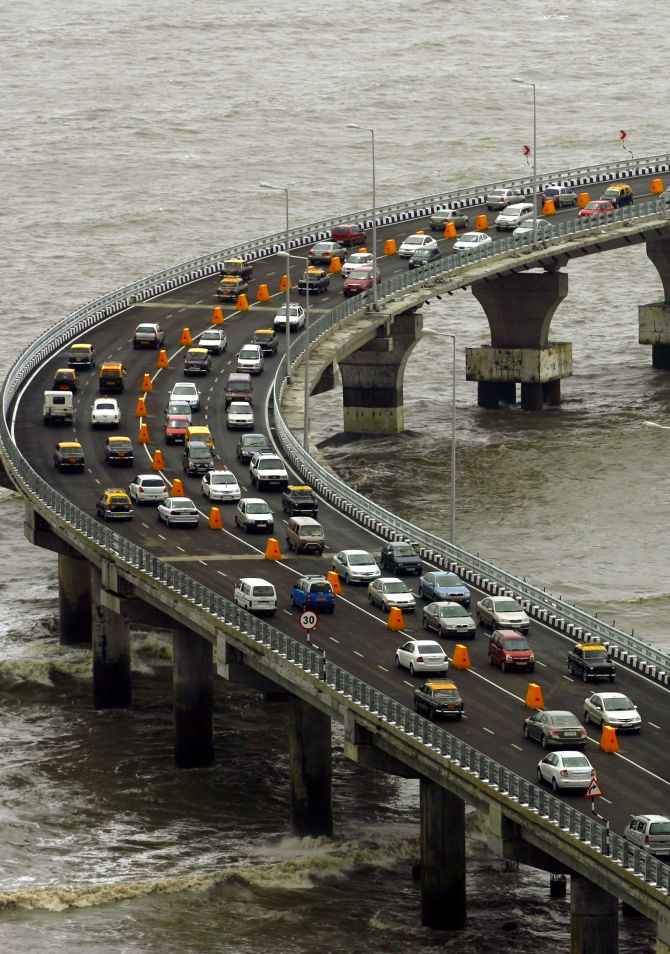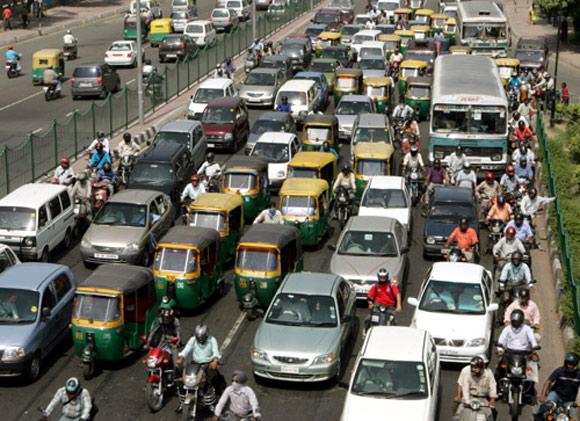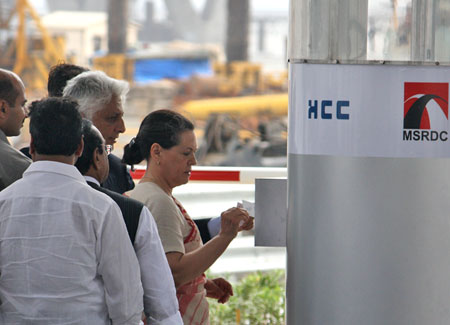Photographs: Punit Paranjpe/Reuters BS Bureau
While international service standards require passage through the tollgate in about five seconds per vehicle, the actual time taken in India is usually a large multiple of that.
In 1970, Jagdish Bhagwati and T N Srinivasan, two of India's most renowned economists, wrote a book called India: Planning for Industrialisation.
Amongst the many things that they argued were wrong with the way India was managing its economy, one was that the country did not have the skills to manage projects, in the matter of both execution and operation.
That criticism still holds good - not just with the public sector, where the warts are more visible, and about which the two economists were talking then, but also with the private sector, which has been co-opted into the infrastructure sector via public-private partnerships.
No better example of this can be found than in the way India manages an operation that requires minimal skills, namely, the tollbooths on roads.
With only a few exceptions, they are poorly managed, whichever way one looks at them.
...
How India can reduce the long waiting period at toll booths
Photographs: Punit Paranjpe/Reuters.
First, the user-pays principle is half applied. After the user has paid, part of the revenue is supposed to go to the government. But while the toll is fully collected, many a time a lot of it leaks away.
Second, while international service standards require passage through the tollgate in about five seconds per vehicle, the actual time taken in India is usually a large multiple of that.
Third, while normally there is a separation of octroi booths from normal tollgates, this is often not done at state borders, which results in delays.
Fourth, while the toll amount should be rounded off at a convenient number, this, too, is not always done. Lastly, the poor working conditions at tolls the world over are exacerbated in India by bad labour practices.
...
How India can reduce the long waiting period at toll booths
Photographs: Reuters
Overall result: huge economic losses as vehicles burn fuel and people waste precious time. For example, at the gigantic tollgate between Delhi and Haryana, during peak hours as many as 2,000 cars can get held up on either side.
This happens every day, for around eight hours daily. Why? Because some wise men in the government have decided that, firstly, it is wrong to force users to adopt the cashless option and, secondly, that the toll will be linked to the inflation rate.
While this sounds wonderful as both democratic practice and equity, the practical result is that while the toll charges come in fractions, the change needed to pay them is not easily available with both the payer and the charger.
...
How India can reduce the long waiting period at toll booths
Image: Sonia Gandhi at the automated toll system on Bandra-Worli Sea Link.Photographs: Rajesh Karkera
Some tollgates, such as the one on the Sea Link in Mumbai, have adopted the dangerous practice of having an employee hang out over the car lane to speed up the change-delivering process.
But a simple rounding-off rule, followed mostly everywhere in the world, would have taken care of one half of the waiting problem.
Another rule, that only cashless payments will be permitted, will take care of most of the rest of the problem. Both have been under consideration for a few years now. But, consistent with the government's style of functioning, no decision has been taken yet. And none is in prospect, either.






article